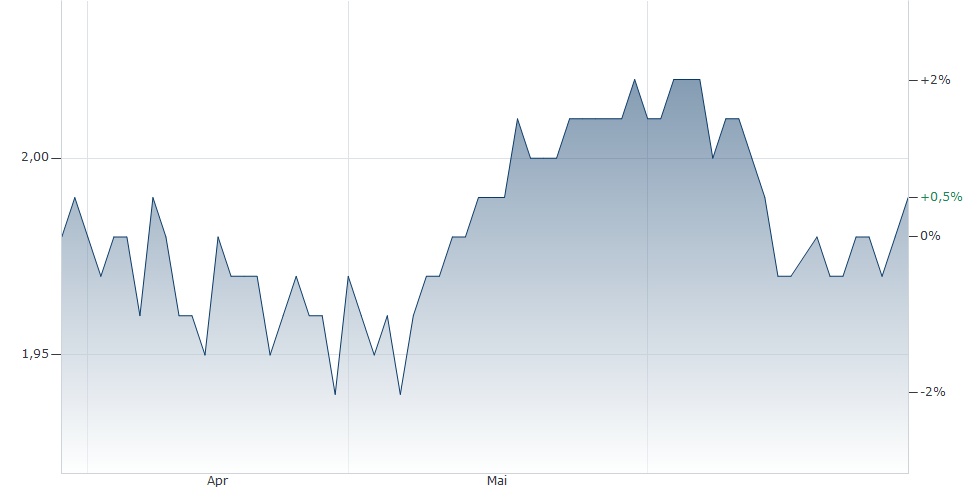The price of oil is falling, but fuel prices are stagnating. Finally, another reason to grumble.
Raised index finger for Total $TTE (+0.61%) , Shell $SHEL (-0.33%) and Co.?
It's that time again. The summer break is approaching in Germany. While in some federal states the vacations have already begun, other students are still waiting for their longed-for free time and the family vacation that goes with it.
Diesel prices have fallen rapidly by around 25% in recent months, while the level for gasoline has remained comparatively constant. A curse for the logistics of the railroad ... So now road transports are cheaper again.
The family man has just finished his last day of work. Tomorrow he will finally be going on vacation. Quickly fill up the tank, he thinks to himself. Tomorrow it will be more expensive again anyway. And bang: Today 10ct more than yesterday. That's an extra 5€ for an average 50L tank.
These oil companies make themselves yet again the pockets full ... 🤬
Is that really so or are there market mechanisms that explain something like that?
How do the fuel prices result?
The majority of fuel prices are made up of taxes from the Federal Republic of Germany. That comprises about 60% of the price of gasoline. Diesel ~52%. This includes energy tax (formerly mineral oil tax), value added tax and CO2 pricing.
So far, so good. Everyone knows the game by now.
But how does it actually look on the producer side and what does the remaining 40% actually contain?
The oil business and the associated oil trade are a fiercely competitive business and yet the average motorist does not understand the business behind it. He has to pay for it anyway. The alternatives outside of urban public transportation in Germany are very meager, the long-distance train via ICE often more expensive than the private car.
In the remaining 40% approx. 33% are subject alone to the procurement of the crude oil. Straight once approx. 7% thus are the proceeds for the mineral oil producer. This is called the contribution margin or the flat-rate contribution margin.
Let's take a closer look at this contribution margin for the sake of clarity. What is behind it?
For simplicity's sake, we could say, "Everything else." Because that is exactly what would be targeted. The producer has to finance administration, distribution (i.e. also the respective service station operator, the transporter, etc.), storage and blending out of this lump sum.
Blending of what?
Formerly known as the Biofuel Quota Act, now anchored in the BImSchG (Federal Immission Control Act) by an amending law with fixed quotas and thus the basis for the subsequent EC Directive on renewable energies.
So there is a provision for fixed quotas for blending biofuels. In Germany, for example, we use diesel B7, E5 or E10. B corresponds to biodiesel, E corresponds to ethanol. The respective number gives the volume share as a percentage of the mixture.
Here is the pitfall in the object. At the moment, the ethanol price hovers around 2€/liter, biodiesel ~1.60€/liter.
Clearly now some claim: "Well with 100L mixture, that's just 10€ ..." If one calculates however only on 1L, thus 50mL with E5, it is still 10ct.
Production-related standard deviations, transport costs, etc. are not even considered here.
And one or the other may not believe it now, but actually usually at the beginning of the vacations these prices go up. But why?
- The fuel quotas apply to all fuels. So neither locomotives, automobiles, nor airplanes are exempt. So people tend to travel for their summer vacation, which pushes up demand. Incidentally, it is not only Germans who want to travel. Also in other countries one would like to use its spare time gladly.
- Harvest time is starting, which therefore also leads to an increased demand for fuel in the agricultural sector.
- The Rhine actually has a lower level again, which is why inland navigation is hindered. The ships can only take inferior loads and the transport is correspondingly more expensive.
In fact, however, the article only delimits part of the truth. Many other factors would have to be taken into account.
Among them, for example, the European certificate trade for emission rights, the local production costs and, of course, the European fuel trade, which is in direct competition and at the same time correlation. (Heating oil/diesel - correlation to be emphasized in this context).
If one or the other is more interested in the oil industry after all, feel free to add comments for further possible contributions. For example, "unknown players", such as CGG $CGG among others.
Have a great day and a great bill at your local trusted gas station. 😘
The bluish line chart is from finanzen.net and includes the ethanol price in €/L.
You can find the current biodiesel prices in the 1st chart at. https://www.ufop.de/biodiesel-und-co/biodiesel-preis/





